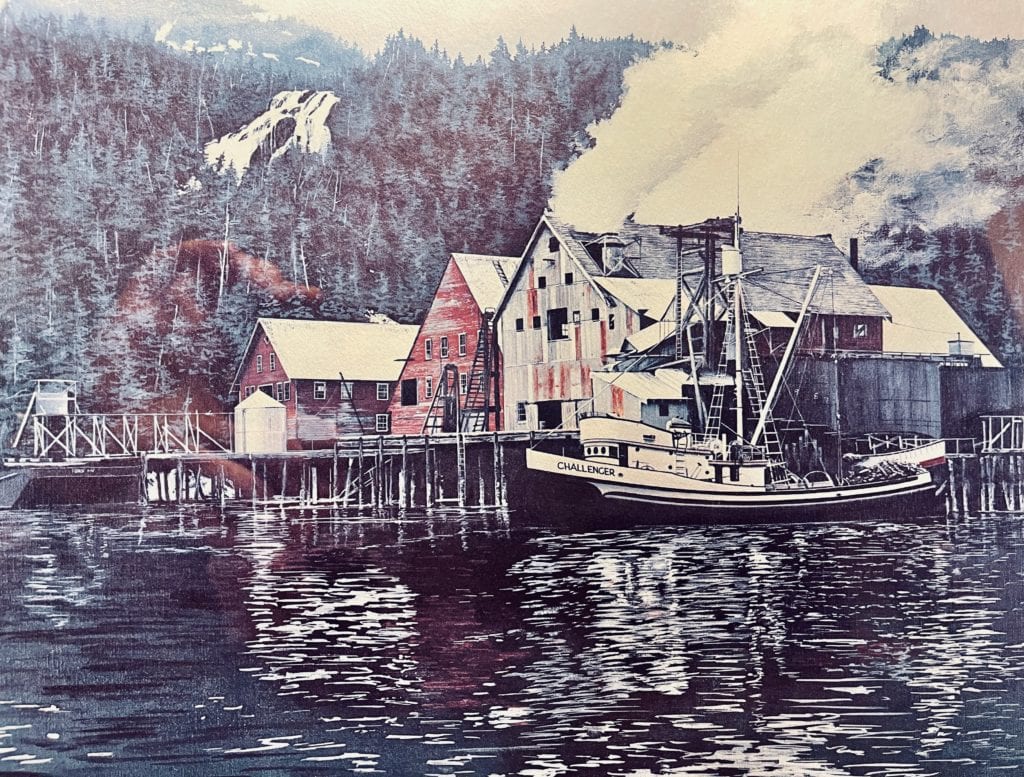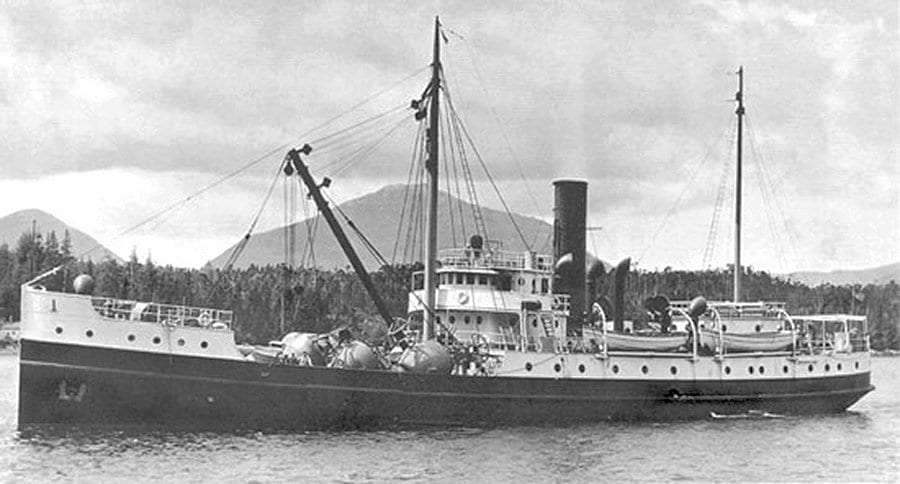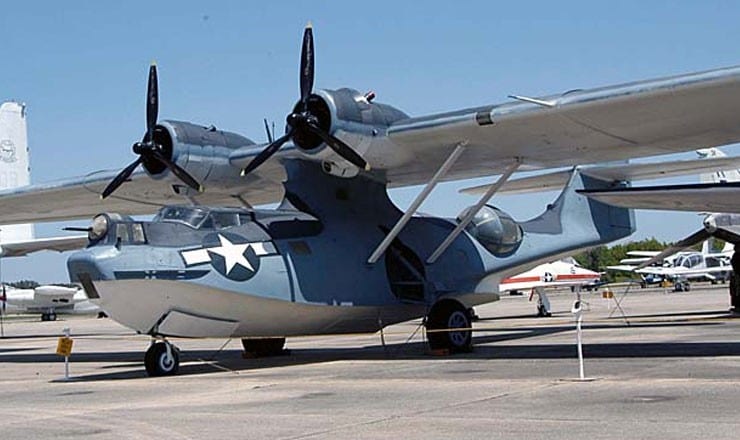
With the North Cloud trio still stranded on Grass Island, it was Martin Anderson and the Lady Jane first to arrive on the scene.
The Lady Jane was one of three 73-foot wooden craft originally built for the lucrative Alaska herring fishery, which lasted over half a century before the stocks declined dramatically in the late ’30s. The three sister ships were noted for their fine lines and distinctive porthole windows in the wheelhouse.
Anderson ended up with the Lady Jane and used it for tendering on the flats and Prince William Sound, as well as for towing floating canneries from winter storage to various locations during the summer. He was highly regarded as a seaman with vast local knowledge.
On board with Anderson were a crew of four: Richard Davis, Jack Dinneen, Lou McFerren and Nick Olson.
Two were CHS graduates: Davis, 31, went on to serve as an ensign in the U.S. Navy during WWII; Dinneen, 37, was a jack of all trades and served as chief of the Cordova Volunteer Fire Department for countless years.
With the arrival of the U.S. Coast Guard Cutter Cedar and a PBY long-range patrol aircraft from Kodiak, the first rescue attempt began. Because of shallow waters, the Cedar had to stay a considerable distance offshore.
From the Cordova Times, under the bold headline “ICE FLOE STAYS RESCUE OF HOWARDS,” came this report:
“Only a narrow ice floe separated Mr. and Mrs. Fred Howard and Robert Zentmire from rescue this afternoon, as a skiff from Martin Anderson’s Lady Jane attempted to take the trio off the east point of Grass Island bar where they have been marooned almost a week. But the ice floe refused to take to an ebbing tide which would have cleared the way, and the stranded trio had to go back to their makeshift hut to await another rescue attempt tomorrow.

“Earlier today Anderson took the Lady Jane into a small ice-surrounded slough at the east end of the bar. The Howards are now in possession of a walkie-talkie outfit, dropped to them by a Coast Guard PBY plane which flew over the area for a couple hours. The stranded party could receive over the radio but could not send talking to them. He asked them to come to the east beach to board a skiff if it could reach ashore.
“Conversations heard here later revealed that the trio were at the requested spot that the skiff from the Lady Jane reached within 40 feet of the shore – separated by a treacherous ice floe. Anderson said he could see the trio on the beach. They answered his radio messages by waving signals. He told them if they were unable to stand the cold, to signal him and go back to the hut. Temperatures were reported low, with a stiff wind blowing. It was snowing and visibility was very poor. At 3:30 p.m. the trio could stand the cold no longer and headed back to their camp.
“Anderson had intended to stand-by in the slough, but in messages to the Cedar he said it was getting too rough. The Lady Jane’s propellors were picking up icebergs. After the stranded trio started back to their hut he would have to go out to sea to stand by overnight.”

Meanwhile, the PBY headed to Cordova. Its pilot, LTJG T.J. O’Brien, reported that during its several hour over-flight, in response to inquiries over the walkie-talkie, the stranded trio wrote “OK” in the snow, and said they did not need food, supplies or a stove offered by the plane, which turned out to be the only good news of the day.
O’Brien said with better weather forecast for the following day, he had high hopes the Cedar would be able to send a power boat through to the Lady Jane inside the bar.
However, conditions the next day were not as forecast, forcing the Cedar to remain offshore a considerable distance, and leaving the whole rescue project in limbo.
The PBY, which had figured to again assist in directing from the air, was grounded due to a zero-zero ceiling at the scene.
Amidst howling winds and blinding snow, the Howards and Zentmire continued waiting in their hut, with the sound of nearby waves crashing on the beach.
Next week: Saga of the North Cloud, Part V: Rescue, At Last!





